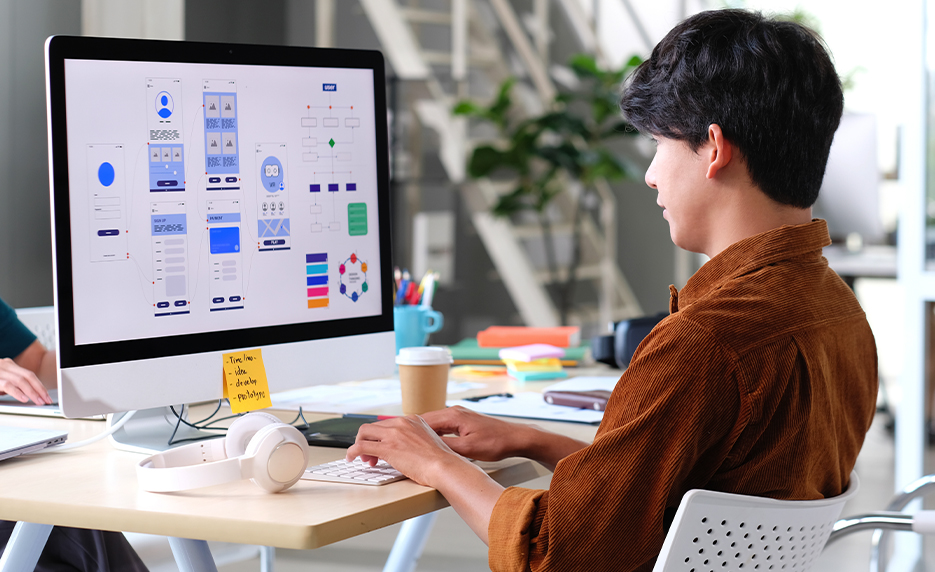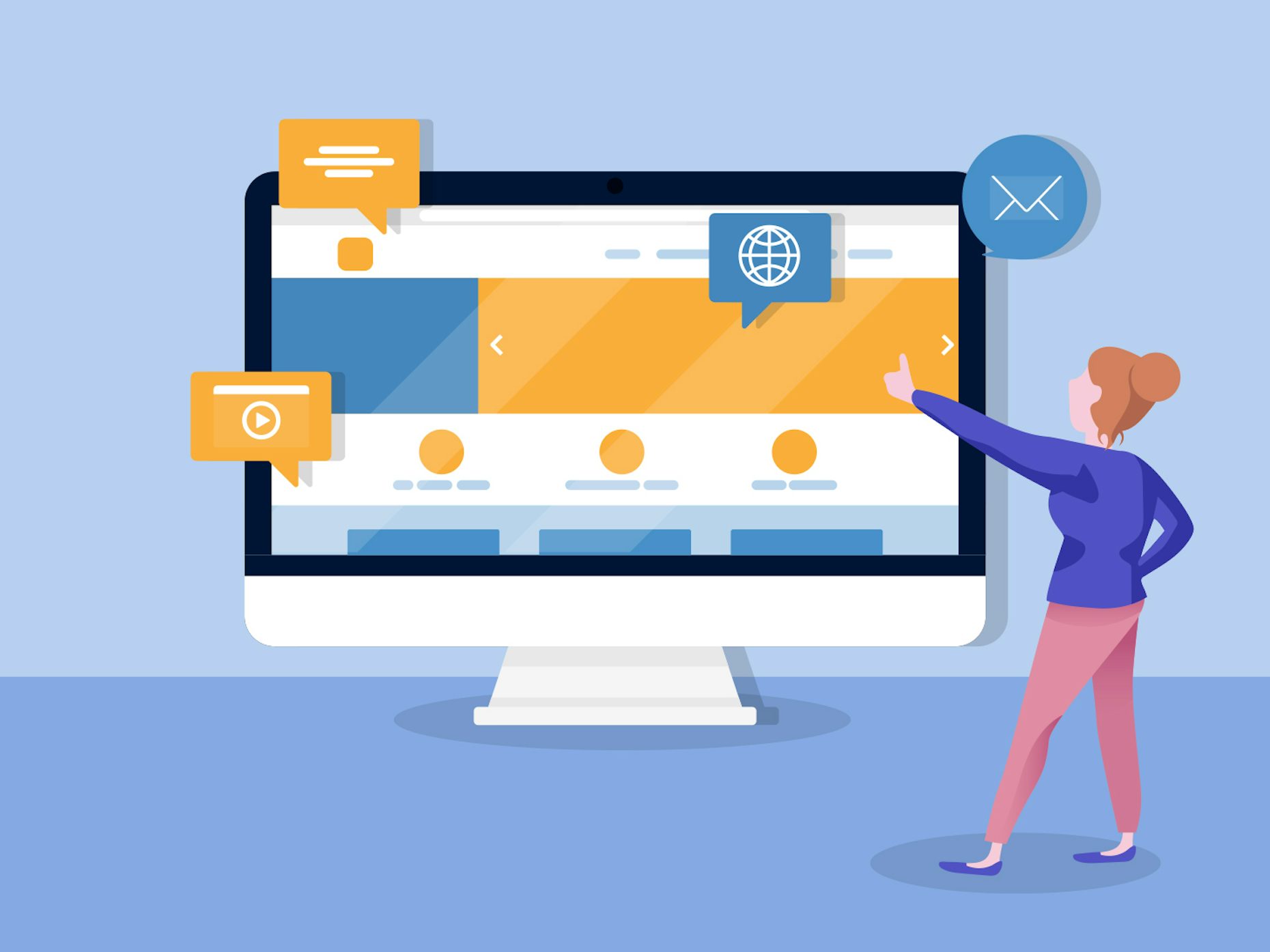All Categories
Featured
Table of Contents
- – Web Design Ledger: Homepage Tips and Tricks:
- – What Is A Web Designer? (2022 Guide) - Brains...
- – $899 - Custom Mobile Friendly Website Design ...
- – Web Design Software By Xara Tips and Tricks:
- – The Top 10 Most Important Elements Of A Websi...
- – St Louis Seo Company - St Louis Web Design An...
- – What Is Web Design? - Interaction Design Fou...
- – Indianapolis Web Design And Digital Marketin...
- – Awwwards - Website Awards - Best Web Design ...
- – Web Design Tools & Software - Webflow Tips a...
- – Awwwards - Website Awards - Best Web Design ...
Web Design Ledger: Homepage Tips and Tricks:
Quick summary Use and the energy, not the visual design, figure out the success or failure of a site. Because the visitor of the page is the only individual who clicks the mouse and for that reason decides everything, user-centric style has developed as a basic approach for successful and profit-oriented website design - web design frederick md.
and the utility, not the visual style, determine the success or failure of a site. Given that the visitor of the page is the only person who clicks the mouse and for that reason decides whatever, user-centric style has ended up being a standard technique for effective and profit-oriented website design. After all, if users can't use a function, it might too not exist.
g. where the search box ought to be put) as it has actually currently been carried out in a number of short articles; instead we focus on the methods which, utilized appropriately, can lead to more sophisticated design decisions and simplify the process of viewing presented details. Please discover that you may be thinking about the usability-related articles we've published prior to: Principles Of Great Website Design And Effective Website Design Guidelines, In order to use the principles correctly we first need to understand how users engage with websites, how they believe and what are the standard patterns of users' behavior.
What Is A Web Designer? (2022 Guide) - Brainstation® Tips and Tricks:
Visitors glance at each new page, scan some of the text, and click the very first link that catches their interest or slightly looks like the important things they're trying to find. In reality, there are big parts of the page they do not even look at. Most users browse for something fascinating (or beneficial) and clickable; as quickly as some promising candidates are discovered, users click.
If a page provides users with premium material, they want to compromise the content with advertisements and the design of the website. This is the reason not-that-well-designed websites with premium material acquire a great deal of traffic over years. Content is more crucial than the design which supports it.

Users don't check out, they scan. Notice how "hot" areas abrupt in the middle of sentences. This is typical for the scanning process. Very basic principle: If a website isn't able to fulfill users' expectations, then designer stopped working to get his task done effectively and the business loses money. The higher is the cognitive load and the less user-friendly is the navigation, the more ready are users to leave the site and look for alternatives.
$899 - Custom Mobile Friendly Website Design By Go Web ... Tips and Tricks:
Neither do they scan web page in a linear style, going sequentially from one site area to another one. Instead users satisfice; they pick the first affordable choice. As quickly as they discover a link that appears like it might cause the goal, there is a great chance that it will be right away clicked.
It doesn't matter to us if we comprehend how things work, as long as we can use them. If your audience is going to act like you're creating billboard, then design great billboards." Users wish to be able to manage their browser and rely on the constant data presentation throughout the website.
If the navigation and site architecture aren't user-friendly, the number of enigma grows and makes it harder for users to understand how the system works and how to get from point A to point B. A clear structure, moderate visual clues and easily recognizable links can help users to find their path to their aim.
Web Design Software By Xara Tips and Tricks:

claims to be "beyond channels, beyond items, beyond distribution". What does it mean? Considering that users tend to check out websites according to the "F"-pattern, these three declarations would be the first elements users will see on the page once it is loaded. The design itself is easy and instinctive, to understand what the page is about the user needs to search for the answer.
When you've achieved this, you can communicate why the system works and how users can benefit from it. Individuals won't use your website if they can't discover their way around it. 2. Do Not Waste Users' Persistence, In every task when you are going to offer your visitors some service or tool, attempt to keep your user requirements minimal.
Newbie visitors are ready to, not filling long web kinds for an account they might never ever utilize in the future. Let users explore the site and find your services without requiring them into sharing personal information. It's not sensible to force users to enter an email address to test the feature.
The Top 10 Most Important Elements Of A Website Design Tips and Tricks:
And that's what you desire your users to feel on your web website. The registration can be done in less than 30 seconds as the type has horizontal orientation, the user doesn't even need to scroll the page.
A user registration alone is sufficient of an obstacle to user navigation to cut down on incoming traffic. Manage To Focus Users' Attention, As sites provide both fixed and vibrant content, some aspects of the user interface draw in attention more than others do.
Focusing users' attention to particular locations of the site with a moderate usage of visual components can help your visitors to receive from point A to point B without thinking of how it really is expected to be done. The less enigma visitors have, the they have and the more trust they can develop towards the business the website represents.
St Louis Seo Company - St Louis Web Design And Internet ... Tips and Tricks:
4. Strive For Feature Exposure, Modern website design are generally slammed due to their method of guiding users with aesthetically appealing 1-2-3-done-steps, large buttons with visual effects etc. From the style point of view these aspects really aren't a bad thing. On the contrary, such as they lead the visitors through the site content in a really simple and user-friendly way.
The site has 9 main navigation alternatives which are visible at the first look. The choice of colors might be too light, though. is an essential principle of successful user interface style. It doesn't actually matter how this is attained. What matters is that the content is well-understood and visitors feel comfy with the method they interact with the system.
com gets straight to the point. No cute words, no exaggerated declarations. Instead a cost: just what visitors are trying to find. An ideal solution for efficient writing is touse brief and concise expressions (come to the point as quickly as possible), usage scannable design (categorize the content, use multiple heading levels, utilize visual components and bulleted lists which break the circulation of uniform text blocks), use plain and objective language (a promotion doesn't need to seem like ad; give your users some reasonable and objective reason that they need to use your service or remain on your website)6.
What Is Web Design? - Interaction Design Foundation (Ixdf) Tips and Tricks:
Users are hardly ever on a website to delight in the style; moreover, in the majority of cases they are searching for the information regardless of the style - web design frederick md. Pursue simpleness instead of complexity. From the visitors' point of view, the very best site design is a pure text, with no ads or further content obstructs matching exactly the question visitors used or the material they have actually been looking for.
Finch clearly provides the info about the site and offers visitors an option of alternatives without overcrowding them with unnecessary content. 7. Do not Be Scared Of The White Area, Really it's actually hard to overestimate the importance of white space. Not only does it help to for the visitors, but it makes it possible to perceive the information presented on the screen.
Complex structures are more difficult to check out, scan, examine and work with. If you have the choice between separating two style sectors by a noticeable line or by some whitespace, it's normally better to use the whitespace solution. (Simon's Law): the better you handle to supply users with a sense of visual hierarchy, the simpler your content will be to perceive.
Indianapolis Web Design And Digital Marketing Agency Tips and Tricks:
The very same conventions and rules ought to be applied to all elements.: do the most with the least quantity of hints and visual aspects. Clarity: all elements must be designed so their significance is not uncertain.
Conventions Are Our Pals, Standard design of site aspects does not result in a boring web site. It would be an usability headache if all websites had different visual discussion of RSS-feeds.
understand what they're anticipating from a site navigation, text structure, search positioning etc. A normal example from usability sessions is to equate the page in Japanese (assuming your web users don't know Japanese, e. g. with Babelfish) and supply your functionality testers with a task to find something in the page of various language.
Awwwards - Website Awards - Best Web Design Trends Tips and Tricks:
Test Early, Test Often, This so-called TETO-principle needs to be applied to every web design task as usability tests typically provide into significant problems and issues related to a given design. Test not too late, not too little and not for the wrong factors.
Some important points to keep in mind: according to Steve Krug, and testing one user early in the task is much better than screening 50 near completion. Accoring to Boehm's very first law, errors are most frequent throughout requirements and style activities and are the more pricey the later they are gotten rid of.
That implies that you design something, test it, fix it and after that test it again. There may be issues which have not been discovered during the first round as users were practically blocked by other issues. use tests. Either you'll be pointed to the issues you have or you'll be indicated the absence of major style flaws which remains in both cases an useful insight for your project.
Web Design Tools & Software - Webflow Tips and Tricks:

This holds for designers as well. After you've dealt with a website for couple of weeks, you can't observe it from a fresh viewpoint any longer. You understand how it is constructed and for that reason you understand precisely how it works you have the knowledge independent testers and visitors of your site would not have.
It can be linked to other areas such as graphic design, user experience, and multimedia arts, but is more aptly seen from a technological standpoint. It has ended up being a big part of people's daily lives. It is tough to picture the Internet without animated graphics, different designs of typography, background, videos and music.

Throughout 1991 to 1993 the World Wide Web was born. Text-only pages might be viewed using a basic line-mode internet browser. There had been no integrated approach to graphic design components such as images or noises.
Awwwards - Website Awards - Best Web Design Trends Tips and Tricks:
The W3C was produced in October 1994 to "lead the Internet to its complete potential by establishing common procedures that promote its advancement and ensure its interoperability." This discouraged any one company from monopolizing a propriety browser and programming language, which could have changed the impact of the World Wide Web as a whole.
As this has actually taken place the innovation of the web has actually also proceeded. There have actually also been considerable changes in the way people utilize and access the web, and this has changed how websites are designed. Since the end of the browsers wars [] brand-new internet browsers have actually been launched. A number of these are open source indicating that they tend to have quicker advancement and are more encouraging of new requirements.
Learn more about Lovell Media Group LLC or TrainACETable of Contents
- – Web Design Ledger: Homepage Tips and Tricks:
- – What Is A Web Designer? (2022 Guide) - Brains...
- – $899 - Custom Mobile Friendly Website Design ...
- – Web Design Software By Xara Tips and Tricks:
- – The Top 10 Most Important Elements Of A Websi...
- – St Louis Seo Company - St Louis Web Design An...
- – What Is Web Design? - Interaction Design Fou...
- – Indianapolis Web Design And Digital Marketin...
- – Awwwards - Website Awards - Best Web Design ...
- – Web Design Tools & Software - Webflow Tips a...
- – Awwwards - Website Awards - Best Web Design ...
Latest Posts
Web Design Services + Website Development Agency Tips and Tricks:
What Does A Web Designer Do? - Careerexplorer Tips and Tricks:
Web Design Services + Website Development Agency Tips and Tricks:
More
Latest Posts
Web Design Services + Website Development Agency Tips and Tricks:
What Does A Web Designer Do? - Careerexplorer Tips and Tricks:
Web Design Services + Website Development Agency Tips and Tricks: